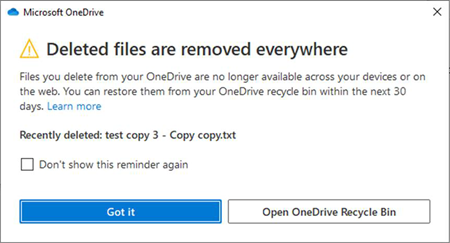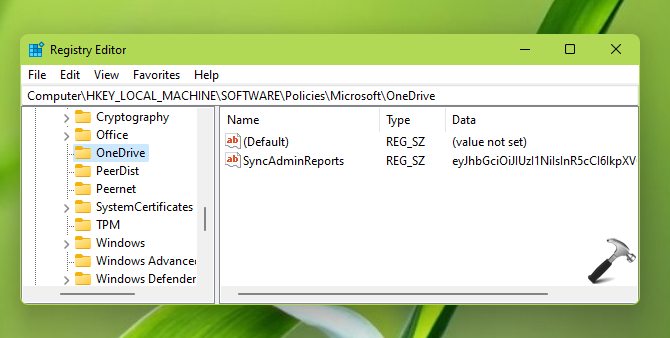
If the registry value is the culprit, the OneDrive application will open normally. Note: If you cannot find the “DisableFileSyncNGSC” value, there is no need for any changes.Īfter restarting, try to launch OneDrive.
#ONEDRIVE SYNC CLIENT REGISTRY WINDOWS#
If there is a value called “DisableFileSyncNGSC” in the Windows Registry Editor, it will block you from opening or using the OneDrive application. Make sure OneDrive is not disabled in Registry Editor If the group policy is the culprit, the OneDrive application will open normally.


If the application launches as it should, it is good and you’ve successfully fixed the problem. So, close all the programs and reboot Windows 10. If an application or process is blocking OneDrive from opening, restarting will unlock it and fix the issue. I know this sounds very basic, but trust me, restarting the system will fix a wide range of issues. Make sure OneDrive is not disabled in Registry Editor.Make sure OneDrive is not disabled in Group Policy.Fix OneDrive Not Starting in Windows 10įollow the below steps/methods one after the other to fix OneDrive not starting in Windows 10. Thankfully, the OneDrive not starting problem is pretty easy to fix.įollow the methods and steps show below to quickly fix the problem in Windows 10. As such, I’m unable to sync files with the cloud. That is, when I try to open OneDrive from the Start menu, the OneDrive folder is opening but the OneDrive application is not starting or running. I don’t know why Microsoft didn’t clarify the situation before now, but at least it’s done.That being said, recently, I got hit by a strange issue where the OneDrive is not starting. The examples Microsoft gave in January (such as large architectural or design documents) always seemed to be more focused on business rather than consumers. To clarify, Microsoft issued message center notification MC241870 on February 26 to confirm that it applies to OneDrive for Business ( Microsoft 365 roadmap item 70558). When Microsoft announced the increased 250 GB limit for file synchronization in January, some confusion existed whether the limit applied only to OneDrive consumer or to both variants.

That 250 GB Limit is for Business Customers Too In any case, the warning (aka, “helpful hint”) is now present. Given the Known Folder Move initiative to relocate files from local drives to OneDrive, it’s entirely possible that some users are confused when they can’t find deleted files in the local recycle bin.

The question is whether they’ll remember thereafter. This is very possible for the two weeks after someone sees the warning. The hope must be that users will remember after they’re reminded by this warning. My assumption is that Microsoft’s telemetry and support data shows that people have deleted items in the past and haven’t known how the OneDrive recycle bin works. The nagging continues until the user sets the “don’t show this reminder again” checkbox. Figure 1: OneDrive’s First File Delete warning


 0 kommentar(er)
0 kommentar(er)
